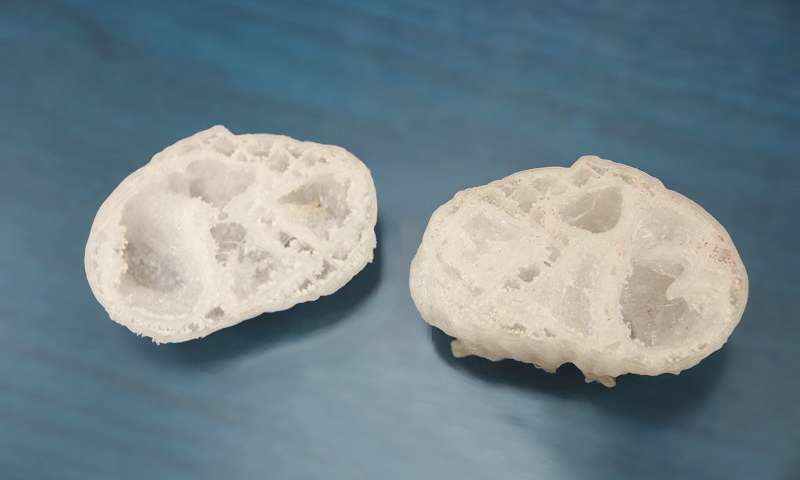
3-D model of a children’s heart. (Credit: Tomsk Polytechnic University)
Scientists from Tomsk Polytechnic University are creating 3-D-printed models of children’s hearts based on magnetic resonance imaging (MRI) of real patients. These models are used as simulators for cardiac surgeons to plan forthcoming operations.
The first 3-D-models of adult hearts were printed at TPU last summer. Now, TPU scientists will start 3-D printing of children’s hearts. Tomsk cardiologists have wide variety of patients, including elderly people who have lived to adulthood with childhood pathology, and infants diagnosed with rare heart diseases. According to doctors, operating on children is twice as difficult since children’s hearts are several times smaller than adults.” Therefore, surgery should be planned in advance.
Professor Vyacheslav Ryabov from the SSMU Department of Cardiology says, “Our cardiac surgeons suggested creating 3-D-models of hearts. Today, surgeons do not blindly go into a planned operation. Using modern diagnostic visualization technologies, they try to obtain information prior to operations, which can help to plan operation process.”
Today, 3-D simulation is used in these cases. According to Ryabov, a disadvantage of computer models is in presenting only external surfaces of hearts; internal surfaces are available only in single sections. 3-D-models can reveal anomalies located inside the heart. Research fellow Konstantin Zavadskiy says, “When we receive patients with rare pathologies, we always want to get 3-D-models and see how these pathologies are actually arranged. Moreover, medical residents and Ph.D. students will be able to investigate rare and complex interrelations of anomaly structures inside the hearts of sick people that will help them to become good physicians.” Currently, the scientists print 3-D-models of children’s and adult’s hearts out of plastic. Further, the researchers plan to print heart copies made of rubber-like material which similar structure to natural heart tissue.

Konstantin Zavadskiy, DMSc, demonstrates 3-D printed model with MRI data of the children’s heart. (Credit: Tomsk Polytechnic University)
Such training will bring surgeons as close as possible to real conditions. Another goal of TPU scientists is to shorten time of heart 3-D printing. Director Vasily Fyodorov said, “We need two weeks to create a 3-D heart model. Meanwhile, patients often need urgent help. We should reduce printing time to one to two days. For this purpose, it is required to select the appropriate equipment and to develop proper software that will directly convert MRI data into the stl files for 3-D printing. Now, we are looking for funding to develop software. Ideally, we would like the 3-D printer to be in the hospital.”




